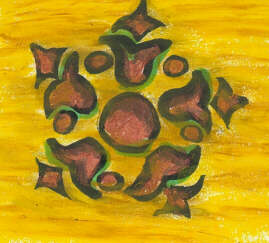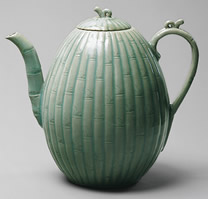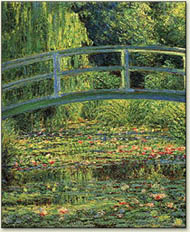Melon-shaped wine ewer, Goryeo dynasty (918–1392), 12th century, Korea, Stoneware with carved and incised decoration of bamboo under celadon glaze
Symbolism of the Color Green
The word green is closely related to the Old English verb growan, “to grow.” Green is the color of life. It is the color of seasonal renewal. Since verdant spring triumphs over barren winter, green symbolizes hope and immortality. The Chinese associate green (and black) with the female Yin - the passive and receiving principle. Islam venerates the color green, expecting paradise to be full of lush vegetation. Green is also associated with regeneration, fertility, and rebirth due to its connections with nature.
In Alchemy, solvents for gold were named "Green Lion" or "Green Dragon" by the alchemists. Such liquids were instrumental in the beginning of the alchemistic Opus Magnum. Transparent green crystal symbolized the "secret fire," which represented the living spirit of substances.
In some cultures, green symbolizes hope and growth, while in others, it is associated with death, sickness, or the devil. It can also describe someone who is inexperienced, jealous, or sick.
Short History of Green Pigments
In painting (substructive color system), green is not a primary color, but is created by mixing yellow and blue. Green pigments have been used since Antiquity, both in the form of natural earth and malachite, used primarily by Egyptians. Greeks introduced verdigris, one of the first artificial pigments. Copper resinate was introduced in European 15th century easel panting, but was soon discarded. Thanks to chemistry, a new generation of greens was introduced beginning in the late 18th century: cobalt green, emerald green, and viridian.
The perception of green occurs with light at wavelengths of roughly 520–570 nm.
|
Timeline of green pigments. |
|
|
In this Egyptian painting, Osiris is painted green. In ancient Egypt, green represented protection and Osiris was called "the great green.” |
In the 15th century, the devil was green, as depicted by Michael Pacher in this Saint Wolfgang panel (1471-1475, Alte Pinakothek, Munich). Medieval poets such as Chaucer also drew connections between the color green and the devil. In his Friar’s tale, the devil came dressed in green. Why? Green was perceived as a pleasant color and one that attracted animals. Hunters dressed in green so as not to forewarn their prey. The Friar’s devil clearly fits this description. The devil is a hunter dressed in green seeking his prey “under a forest syde.” |

Green wallpaper may have contributed to the death of Napoleon Bonaparte. Scheele’s Green was a copper arsenite paint that was first produced in 1778 for commercial use |
|
|
The Impressionists revived the use of the color green. The depiction of the green color of nature was revived in Impressionism partly because of the advent of tubes for pigments, which made it possible to paint on location, and partly thanks to the manufacture of new and brighter green pigments. In his painting “The Japanese Bridge,” 1899, Monet uses the color of hope together with the symbol of a bridge. The bridge stands for the uniting of people and revives hope for a peaceful future. Incidentally, Monet’s use of Emerald Green pigment, which contained arsenic, may have contributed to his blindness in later life. |
|

 Cobalt green
Cobalt green Copper resinate
Copper resinate Emerald green
Emerald green Green earth
Green earth Malachite
Malachite Verdigris
Verdigris Viridian
Viridian



